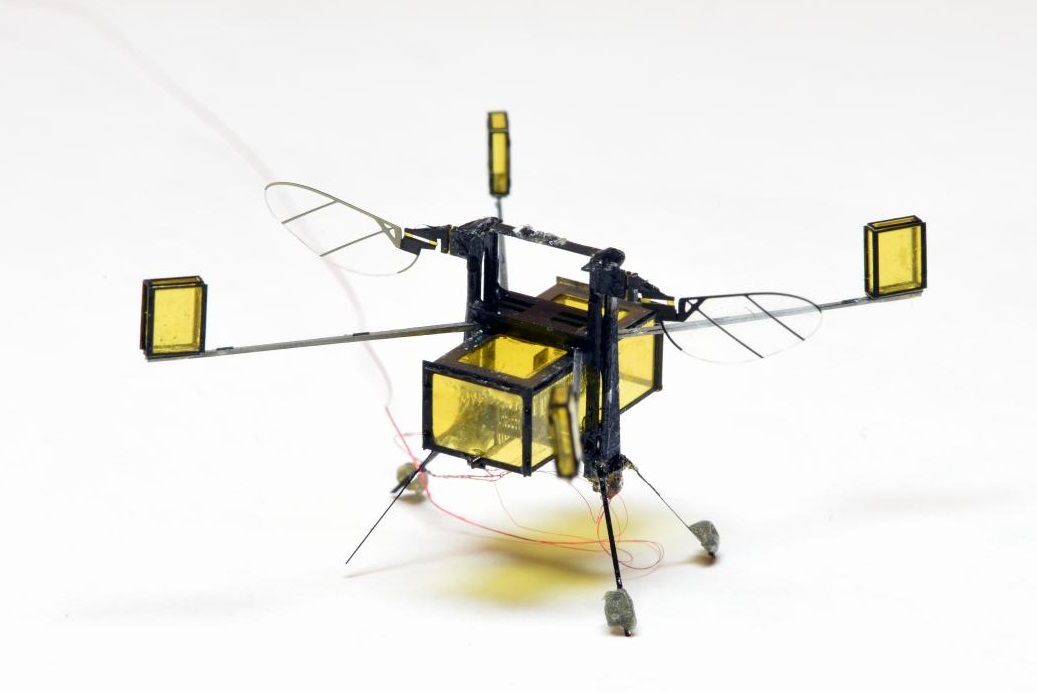In an age where technology continually advances, some of the most exciting innovations come in the form of tiny yet powerful robots. One such groundbreaking project is the RoboBee, developed by researchers at Harvard’s Wyss Institute. This tiny marvel has been fine-tuned over the years to master the tricky art of moving seamlessly from water to air. With its latest capabilities, the RoboBee not only dives into water but effectively propels itself skyward using a unique gas-based mechanism. Let’s dive into how this little creature has evolved and what its future holds.
Mastering the Transition: Challenges Faced
The RoboBee is a testament to the ingenuity of modern robotics. Yet, transitioning between swimming in water and flying in the air poses significant challenges, particularly at its millimeter-scale size. The key hurdles include:
- Water Resistance: The inherent resistance experienced by tiny objects in water can impede movement, making takeoff a challenge for the RoboBee.
- Surface Tension: The need to breach the water’s surface tension is a unique obstacle that larger entities do not face.
- Power Limitations: With its small size, the RoboBee has limited propulsion power from its wings, which complicates launching into the air after being submerged.
Innovative Solutions: The Role of Gas
To tackle these challenges, the clever minds behind RoboBee came up with an ingenious solution: utilizing gas to generate a powerful upward impulse. Engineers including graduate student Elizabeth Farrell Helbling and Yufeng Chen devised a system that can produce gas on-demand. Here’s how it works:
- Buoyant Outriggers: To assist in overcoming surface tension, the RoboBee is equipped with four floaties that bring it to the water’s surface.
- Electrolytic Plate: This component splits water into hydrogen and oxygen, mixing them to create a volatile gas mixture.
- Ignition Mechanism: A spark plug ignites the gas mixture, producing a rapid burst that launches the RoboBee out of the water with remarkable force.
Lightweight Design with Enhanced Functionality
Despite weighing only 175 milligrams—almost double that of previous models due to the added buoyancy mechanisms—the RoboBee’s design is incredibly versatile. The additional weight can be strategically allocated to install new sensors or even a small battery, reducing its reliance on external power sources. This opens up a world of possibilities for its future applications.
Future Implications: Inspiration for Multi-functional Microrobots
The insights gained from RoboBee’s development may pave the way for the next generation of microrobots that can navigate complex environments. Yufeng Chen noted, “We hope that our work investigating tradeoffs like weight and surface tension can inspire future multi-functional microrobots.” This vision suggests that the advancements with RoboBee could lead to robots capable of performing various tasks, from environmental monitoring to search-and-rescue missions.
Conclusion: The Sky’s the Limit
The RoboBee represents more than just a technological achievement; it is a symbol of how innovation can overcome natural limitations. By harnessing the combination of buoyancy and gas propulsion, this tiny robot showcases the potential for future robotics in navigating complicated terrains and enhancing their functionalities. The journey of RoboBee is just the beginning, painting an exciting picture for the future of microrobots in various industries.
At fxis.ai, we believe that such advancements are crucial for the future of AI, as they enable more comprehensive and effective solutions. Our team is continually exploring new methodologies to push the envelope in artificial intelligence, ensuring that our clients benefit from the latest technological innovations. For more insights, updates, or to collaborate on AI development projects, stay connected with fxis.ai.

